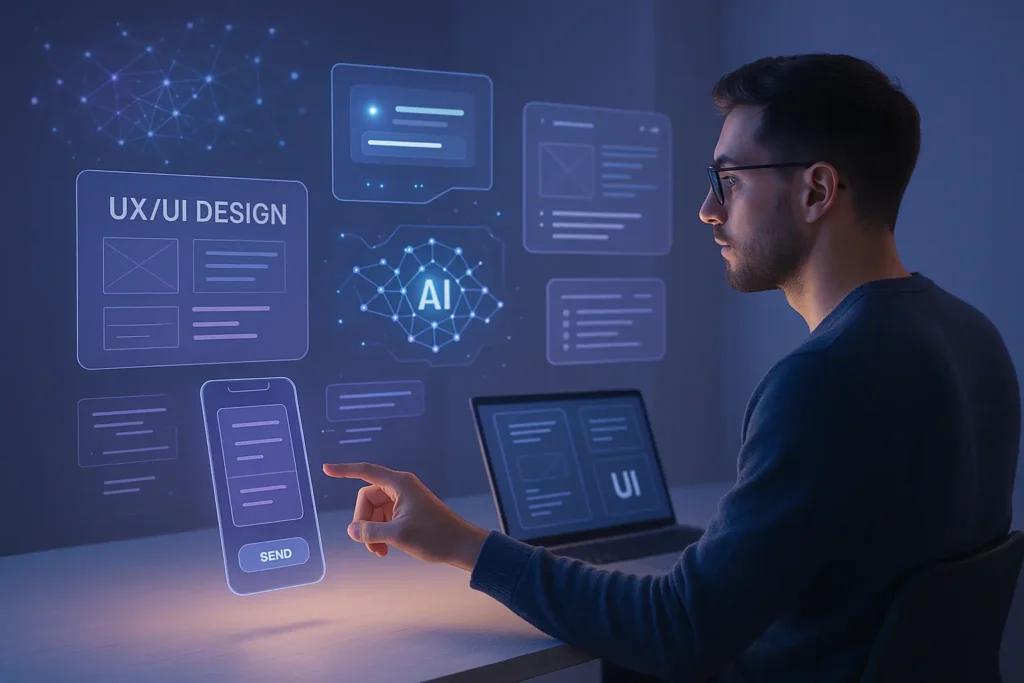Artificial Intelligence (AI) is no longer just a buzzword — it’s actively reshaping how we design and optimize digital experiences. For UX/UI designers, this shift brings powerful opportunities to create smarter, more intuitive, and hyper-personalized products.
1. Smarter Interfaces, Less Friction
AI-powered interfaces are becoming better at predicting user behavior. From intelligent auto-fill forms to adaptive navigation systems, UI design is evolving to reduce friction and respond to user needs more fluidly — often before the user even acts.
At Wandr Studio, we’ve seen how predictive design can drastically improve user satisfaction and streamline the journey.
2. Real-Time Personalization
AI enables real-time customization based on user behavior, preferences, location, and interaction history. This level of personalization improves engagement and retention by making the digital experience feel more human, relevant, and seamless.
We use data-backed personalization techniques at Wandr Studio to create experiences that truly adapt to users.

3. Design Automation: Speed Without Sacrificing Quality
AI tools like Figma’s AI plugins or Adobe Firefly are accelerating the design process. From generating layout suggestions to creating visual elements with just a prompt, designers can focus more on strategy and experience — while repetitive tasks are handled automatically.
Our design process at Wandr Studio integrates AI-assisted workflows to deliver quality at scale, without compromising creativity.
4. Data-Driven UX Decisions
Machine learning algorithms can analyze vast amounts of user data to uncover patterns, pain points, and opportunities. Instead of relying solely on assumptions or small sample sizes, AI helps designers make decisions backed by real user behavior.
This is especially powerful in product audits, which we regularly conduct at Wandr Studio to identify UX gaps and prioritize impactful improvements.
5. Conversational UI and Voice Interfaces
AI is also powering new interaction models like chatbots, virtual assistants, and voice UI. Designing for these experiences requires a shift in thinking — from static screens to dynamic, context-aware conversations that blend logic, language, and tone.
Final Thoughts
AI isn’t replacing designers — it’s empowering them. The future of UX/UI will be shaped by those who know how to harness artificial intelligence to craft more meaningful, efficient, and delightful experiences.
Want to explore how AI can elevate your product’s user experience? Let’s build it together.







